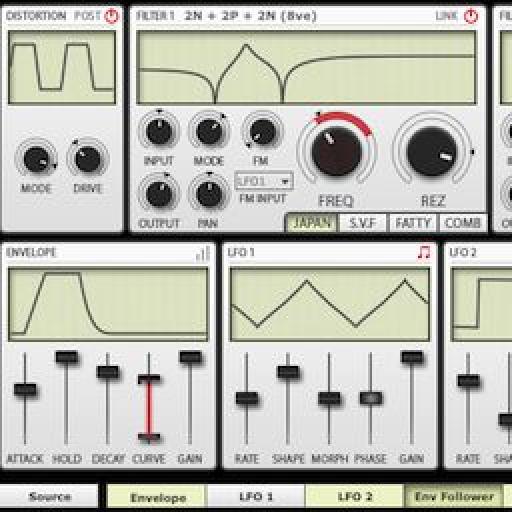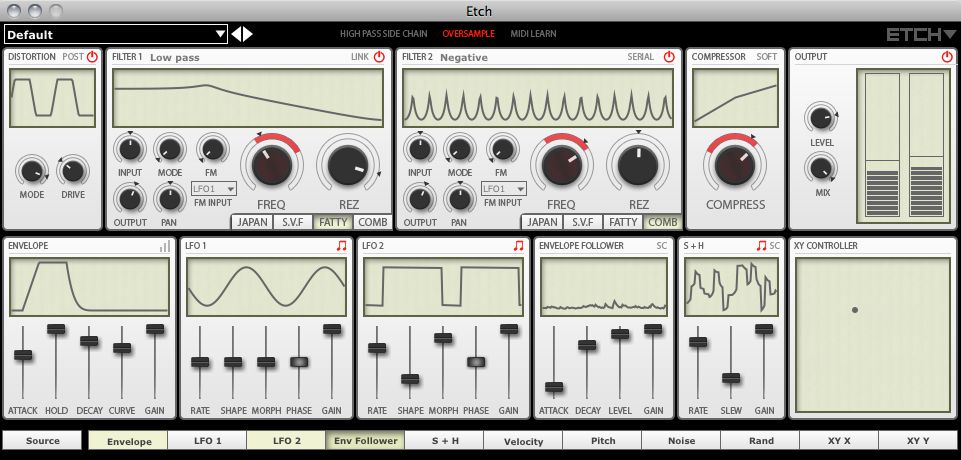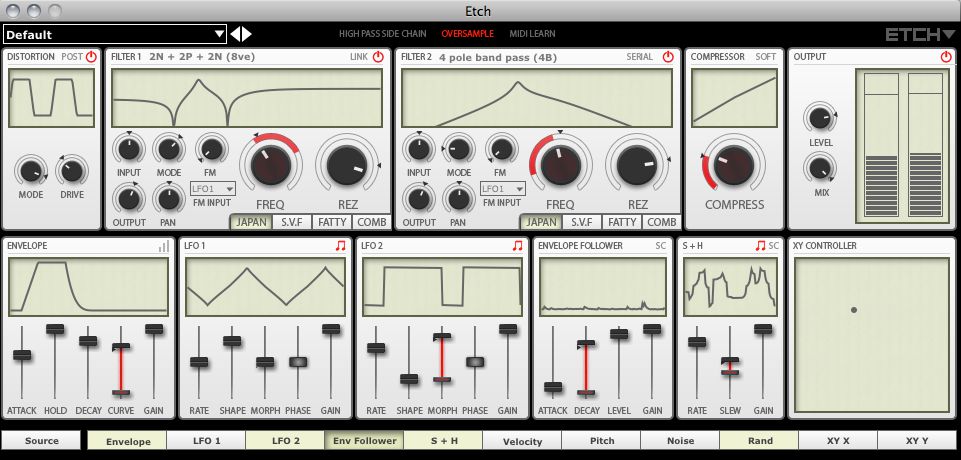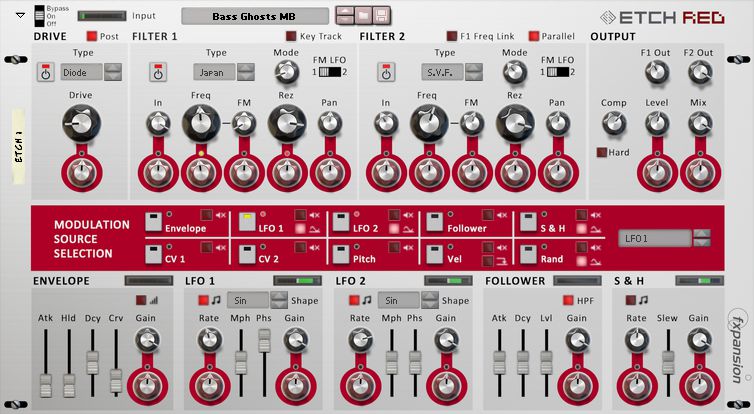If you're looking to breathe new life into any synth, sampler, drum loop, drum machine, or kazoo, look no further than Etch, a new plug-in from FXpansion that is on a basic level, a filter bank with a compressor, some LFOs, distortion and a compressor. But, on an advanced level, and when you understand the route-ability of how each component within Etch works together... Well, it's quite the rabbit hole, let me tell you.
Let's start talking about the filters first!
The Filters
To say that Etch has a couple of filters is really an understatement. In actuality, there are two filters, but each individual filter has different filter types, and each type has different mode. Needless to say, you can spend quite a bit of time exploring the different filter types and their usages. Much to my surprise, a Comb filter is included as one of the filter types, and I must say that it's a real pleasure to be able to drop anything in to Comb style filtering anytime I want. The other modes, SVF, Japan, and Fatty model more standard filter types, but to simply call them regular old filters would be an injustice. They sound amazing, and use the same meticulous modeling technology FXpansion has employed in their award wining synth plug-ins.
The Filters run in series, or parallel mode, which only adds to the versatility and sound. But, what about the modulation capabilities?
Modulation
What really makes Etch special, beyond the amazing sounding filters, are the modulation options, which are extensive. There are two, highly programmable LFOs which can generate basic waveforms, but through the morph knob, and when are used to modulate a single parameter, can create some very cool, more advanced waveforms.
Beyond LFOs, though, there are a few more options that definitely provided me with an hour, or more of fun and use-ability. The Sidechain option on Etch allows you to trigger the Envelope Follower and the S&H modules built-in to Etch. What's cool about the Envelope Follower, especially when used with the Sidechain, is the fact that you can really sculpt how the sidechain signal affects the filter modulation. This small feature, in unto itself, can pretty much assist you in any dance music affect that's out there. Or, with the sample and hold feature, you can get randomization till your hearts content.
There's also the Envelope that can be used to modulate through MIDI, along with a few more parameters within Etch.
MIDI
Etch offers MIDI input from a MIDI keyboard, as well as MIDI Learn functionality. The MIDI keyboard functionality is, on its own, already a Godsend for dubstep artists, because of the ability to use a MIDI keyboard to scale the LFO rates of both LFOs. For example: press one key to trigger a 1/2 note, and then a higher key to trigger an 1/8th note. When you switch over to MIDI channel 2, you get control over the MIDI Note pitch tracking. MIDI channel 3 and 4 control filter cutoff and envelope tracking. In a nutshell, this means you can make any incoming signal melodic.
I actually had a little bit of trouble using Ableton Live with the higher MIDI channel numbers. This is more of a limitation of Ableton, wherein choosing individual MIDI channels going in to Etch is not possible. I looked up on Ableton and FXpansion's boards, and it's a feature request for Live, currently. Still, it wouldn't be a bad idea to devise a workaround for Etch, in the meantime.
Conclusion
Etch, at the current price, really is a steal. Seriously, it's under $100. And, because it really can breathe new life in to any old soft synth you have laying around, you'll want to jump on it. The modulation capabilities make this plug-in a complete time suck, but the filters are really what make it ultimately a very special purchase that you'll definitely use for quite some time.
Discover more about Etch and Etch Red (for Reason 6.5 users) here.






 © 2024 Ask.Audio
A NonLinear Educating Company
© 2024 Ask.Audio
A NonLinear Educating Company
Discussion
Want to join the discussion?
Create an account or login to get started!